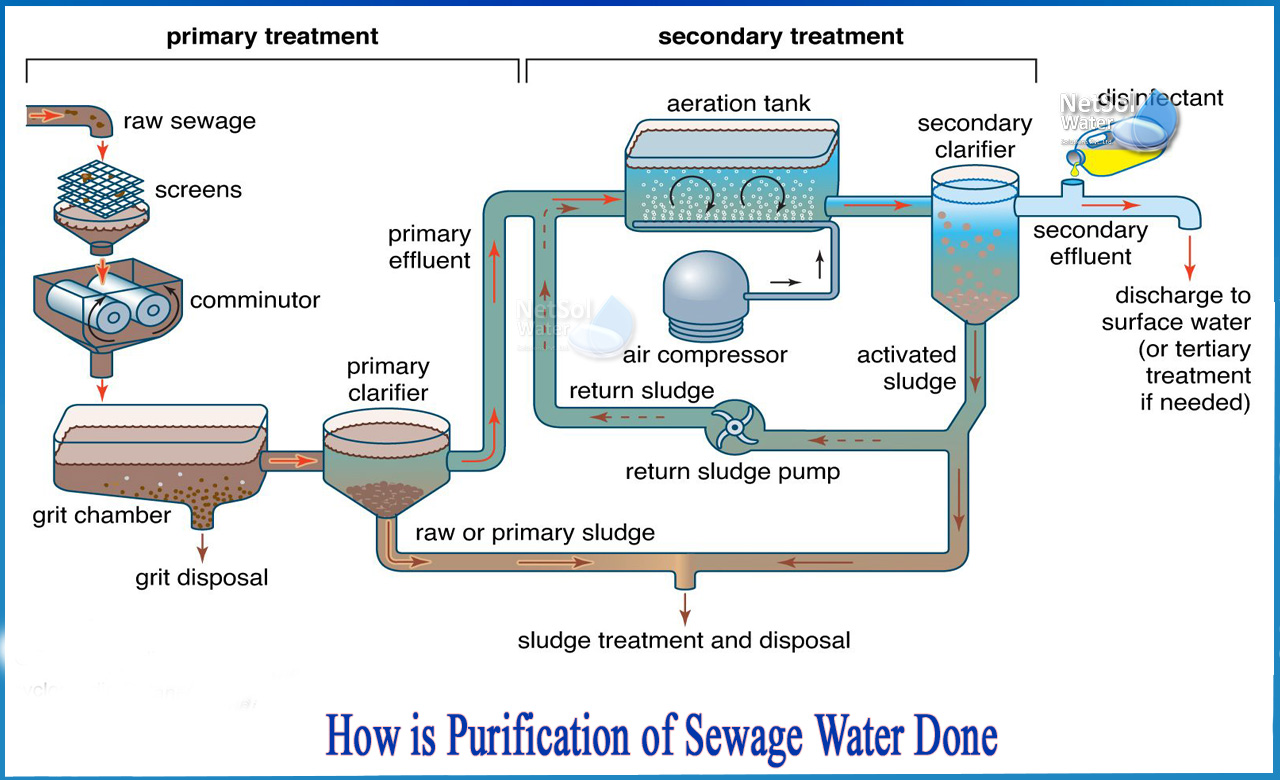How is purification of sewage water done?
Residential and industrial establishments produce sewage. It includes household waste liquid disposed of through sewers from toilets, baths, showers, kitchens, sinks, and so on. Sewage in many areas includes liquid waste from industry and commerce.
In the developed world, the separation and drainage of household waste into greywater and blackwater is becoming more common. Greywater is water that can be reused more easily and is generated by domestic activities such as laundry, dishwashing, and bathing. Blackwater is contaminated with human waste and is derived from toilets.
The majority of the water used in homes and businesses is discharged into municipal sewers or home septic systems. The majority of that water is polluted to some extent because it is used for laundry, bathing, and flushing toilets. Previously, sewage was dumped directly into the ground, rivers, or the ocean without any treatment. However, as the population has grown, so has the demand for wastewater treatment.
The majority of the solids in a home septic system are gradually broken down by anaerobic bacteria (those that do not require oxygen). The remaining liquid waste is discharged into a leach field, where water flows into the ground from porous underground pipes. Pollutants and harmful microorganisms are still present in this water. Some of these are removed as water flows through soil and rock, but in many places they reach groundwater supplies and contribute to water pollution problems.
Special wastewater treatment plants treat municipal sewage. There are several common treatment options. Furthermore, the quality of care varies greatly.
Sewage treatment is divided into three stages: primary, secondary, and tertiary.
1-Primary treatment
Sewage is stored in a basin in primary treatment, where solids (sludge) settle to the bottom and oil and lighter substances rise to the top. After removing these layers, the remaining liquid can be sent to secondary treatment. Sludge digestion is a separate process for treating sewage sludge. The water is usually chlorinated after that, and the sludge is treated and disposed of in a variety of ways.
2-Secondary treatment
Secondary treatment removes dissolved and suspended biological matter in a controlled environment, often using microorganisms. Aerobic bacteria, which consume the organic components of sewage, are used in the majority of secondary treatment systems (sugar, fat, and so on). Some systems employ fixed film systems, in which bacteria grow on filters and water flows through them. Suspended growth systems make use of "activated" sludge, which is sewage mixed with decomposing bacteria. Because oxygen is essential for bacterial growth, sewage is frequently mixed with air to aid decomposition. As the water filters downward, it comes into contact with oxygen and microorganisms, which collaborate to break down the organic matter in the water. Before being released into the environment, the water is usually chlorinated.
3-Tertiary treatment
Tertiary treatment is used to clean water further before it is discharged into a sensitive ecosystem. Beyond primary and secondary treatment, a variety of methods can be used to further disinfect sewage. Particulate matter can be removed using sand filtration, which involves passing water through a sand filter. Nutrient levels in wastewater, such as nitrogen and phosphorus, may still be high. These can upset the nutrient balance of aquatic ecosystems, resulting in algae blooms and overgrowth of weeds.
In a process known as enhanced biological phosphorus removal, phosphorus can be removed biologically. During this process, specific bacteria known as polyphosphate accumulate organisms that store phosphate in their tissue are accumulated. These biosolids have a high fertilizer value when the biomass accumulated in these bacteria is separated from the treated water. Nitrogen can also be removed through the use of nitrifying bacteria.Another method for removing nutrients and waste from sewage is lagooning. A lagoon holds water, and native plants, bacteria, algae, and small zooplankton filter nutrients and small particles from the water.
The water can be safe to drink after tertiary treatment!
For more information, we at Netsol Water are just a call away!
Netsol Water is Greater Noida-based leading water & wastewater treatment plant manufacturer. We are industry's most demanding company based on client review and work quality. We are known as best commercial RO plant manufacturers, industrial RO plant manufacturer, sewage treatment plant manufacturer, Water Softener Plant Manufacturers and effluent treatment plant manufacturers. Apart from this 24x7 customer support is our USP. Call on +91-9650608473, or write us at enquiry@netsolwater.com for any support, inquiry or product-purchase related query.



